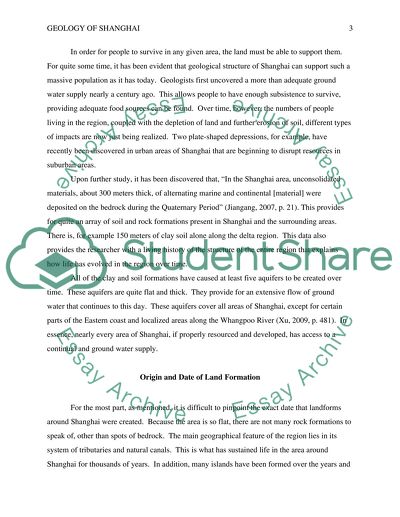Cite this document
(“Geology of Shanghai Term Paper Example | Topics and Well Written Essays - 2000 words”, n.d.)
Geology of Shanghai Term Paper Example | Topics and Well Written Essays - 2000 words. Retrieved from https://studentshare.org/geography/1619459-geology-of-shanghai-china
Geology of Shanghai Term Paper Example | Topics and Well Written Essays - 2000 words. Retrieved from https://studentshare.org/geography/1619459-geology-of-shanghai-china
(Geology of Shanghai Term Paper Example | Topics and Well Written Essays - 2000 Words)
Geology of Shanghai Term Paper Example | Topics and Well Written Essays - 2000 Words. https://studentshare.org/geography/1619459-geology-of-shanghai-china.
Geology of Shanghai Term Paper Example | Topics and Well Written Essays - 2000 Words. https://studentshare.org/geography/1619459-geology-of-shanghai-china.
“Geology of Shanghai Term Paper Example | Topics and Well Written Essays - 2000 Words”, n.d. https://studentshare.org/geography/1619459-geology-of-shanghai-china.


